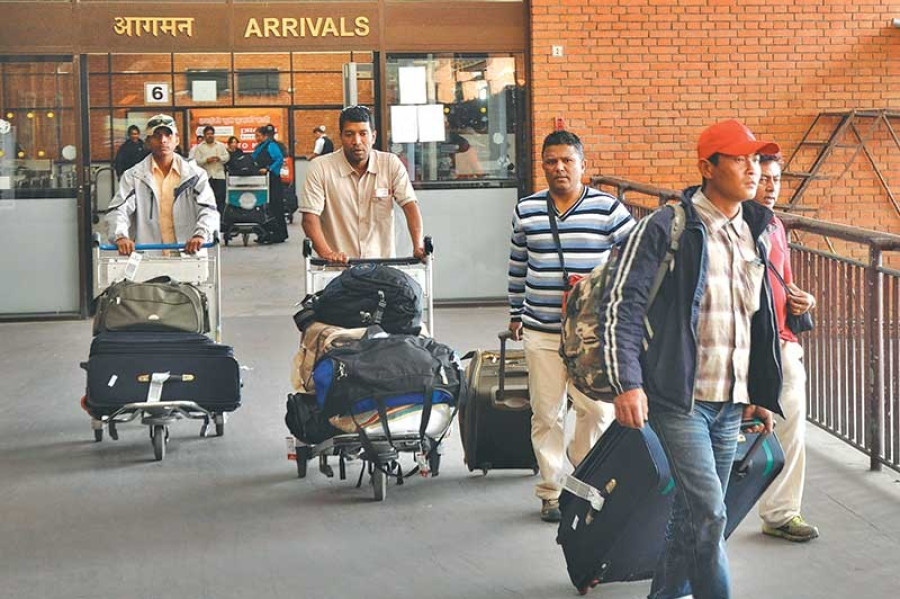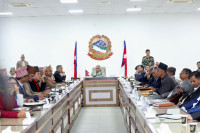National
Nepal’s mission in Malaysia approves local demand for more than 31,000 Nepali workers
Workers demand has come from industrial, services, agriculture, plantation and construction sectors.
Chandan Kumar Mandal
The Nepal Embassy in Malaysia has approved demand for more than 31,000 Nepali workers in a span of two months, a development that raises hopes the migration of Nepali workers to Malaysia would proceed normally in the foreseeable future.
The embassy said it attested demand letters for 31,201 Nepali workers between the first week of October and November. According to the embassy, it approved 963 demand letters from Malaysian employers seeking workers for its various sectors.
The highest demand of Nepali workers has come from Malaysia’s industrial sector (17,116), followed by the service sector, including security guards (10,183), agriculture (1,475), plantation (1,397) and construction (1,030).
According to Maheshwor Mani Tripathi, Nepal Embassy’s Second Secretary, these demand letters have been approved, following all the foreign employment-related laws, regulations, directive that mandates the foreign missions to verify demand letters and provisions mentioned in the labour agreement between Nepal and Malaysia.
The latest approval from the embassy is also significant because the attestation follows a government directive that requires employers to first get workers’ demands approved by the Nepali foreign mission abroad.
The move was aimed at eliminating incidents of cheating of Nepali workers through fake demand letters. The directive was first criticised by the recruiting agencies saying it only added hassles in the hiring of Nepali workers.
“Employers have no problem with the attestation process. Nor are there any hassles in receiving the attestation,” said Tripathi. “No third party can come to the embassy for such attestation process. The company CEO, director or HR manager has to visit for the demand letter approval, meaning zero cases of middlemen and cheating through fake demand letters.”
Migration of Nepali workers remained suspended for months after a government crackdown on agencies that illicitly collected hefty amounts from Malaysia-bound Nepali workers. Even after a landmark agreement between both countries, the departure of Nepali workers could not begin until another deal in September got inked that paved the way for a formal re-start of the migration of workers.
“It is a very good number,” Tripathi told the Post over the phone from Malaysia. “Resumption of labour migration to Malaysia has gained momentum, that’s what the number of demand letters shows.”
Even after the resumption of migrations in September, the departure of workers to Malaysia remained sluggish as it takes a long time getting demand letters of the workers processed and their flight out of the country to start their jobs.
Approval of demand letters seeking thousands of Nepali workers is expected to surge in the coming months with new demands for Nepali workers pouring in. “Most of these demand letters submitted were before May 16, 2018. Now these demands have been cleared,” said Tripathi. “There were also some recently submitted demand letters that got approved.”
For years, Malaysia has remained the most-preferred labour destination country for the Nepali migrant workers. “Whether the demand of Nepali workers will decrease or increase in months is only up to the employers,” said Tripathi. “But, Nepali workers have earned a good reputation in the country as hardworking and loyal people.”
According to Suresh Joshi, director at the Foreign Employment Office, Tahachal, labour migration to Malaysia has not yet reached its pre-ban level, although the demands for workers are coming.
“We are expecting the number of workers going to Malaysia to increase soon. The office used to issue nearly 400 labour permits to workers every day,” said Joshi. “Recruiting agencies are getting pre-approval for worker demands. They will go ahead with the hiring process now, so that the workers can leave for Malaysia. Recruiting agencies say the demand will soar in 2020.”




 19.12°C Kathmandu
19.12°C Kathmandu















